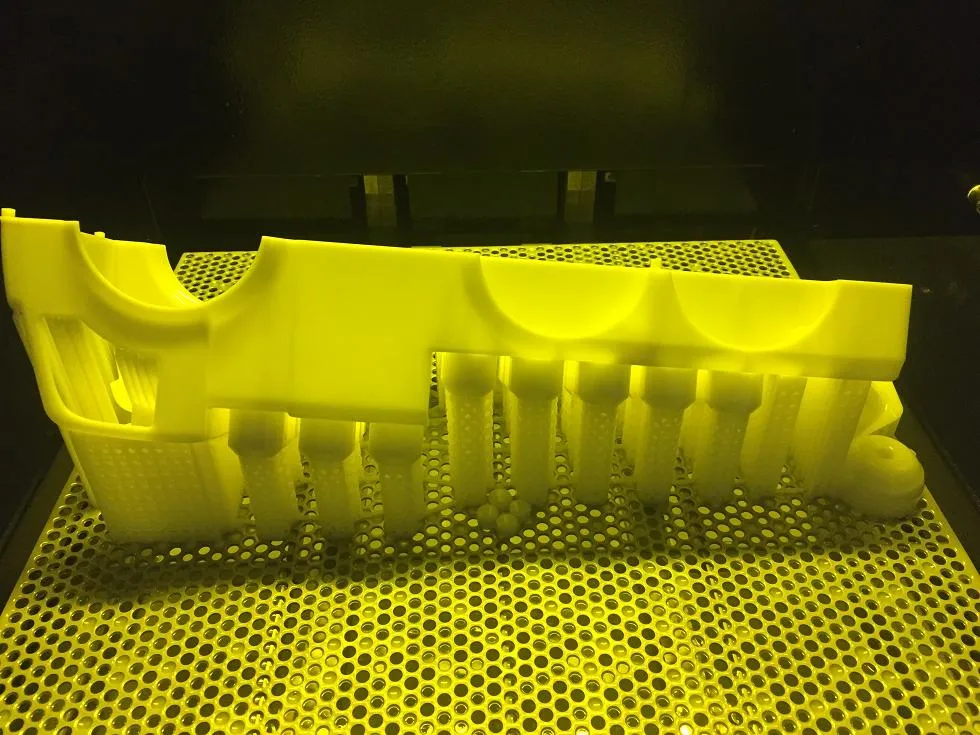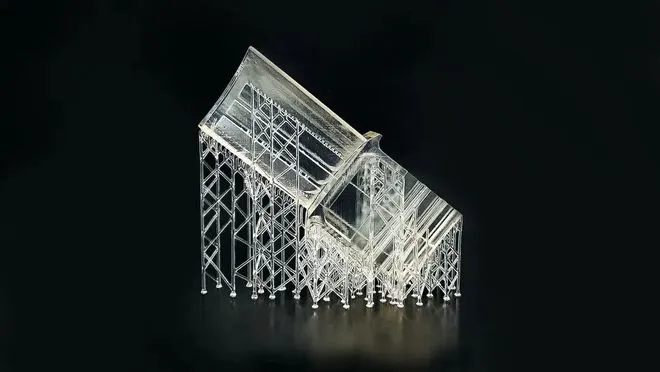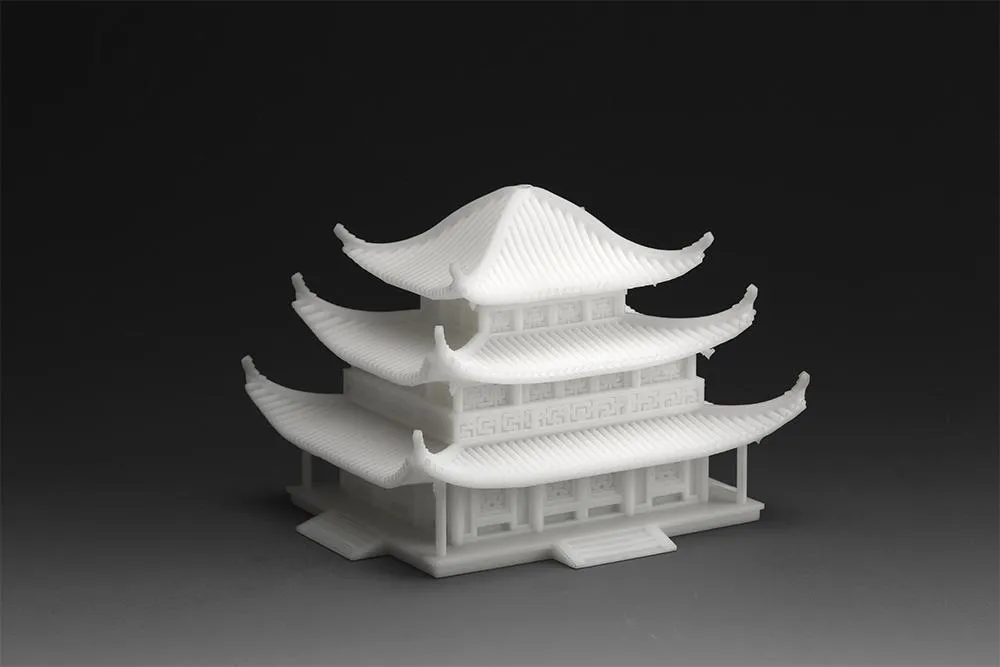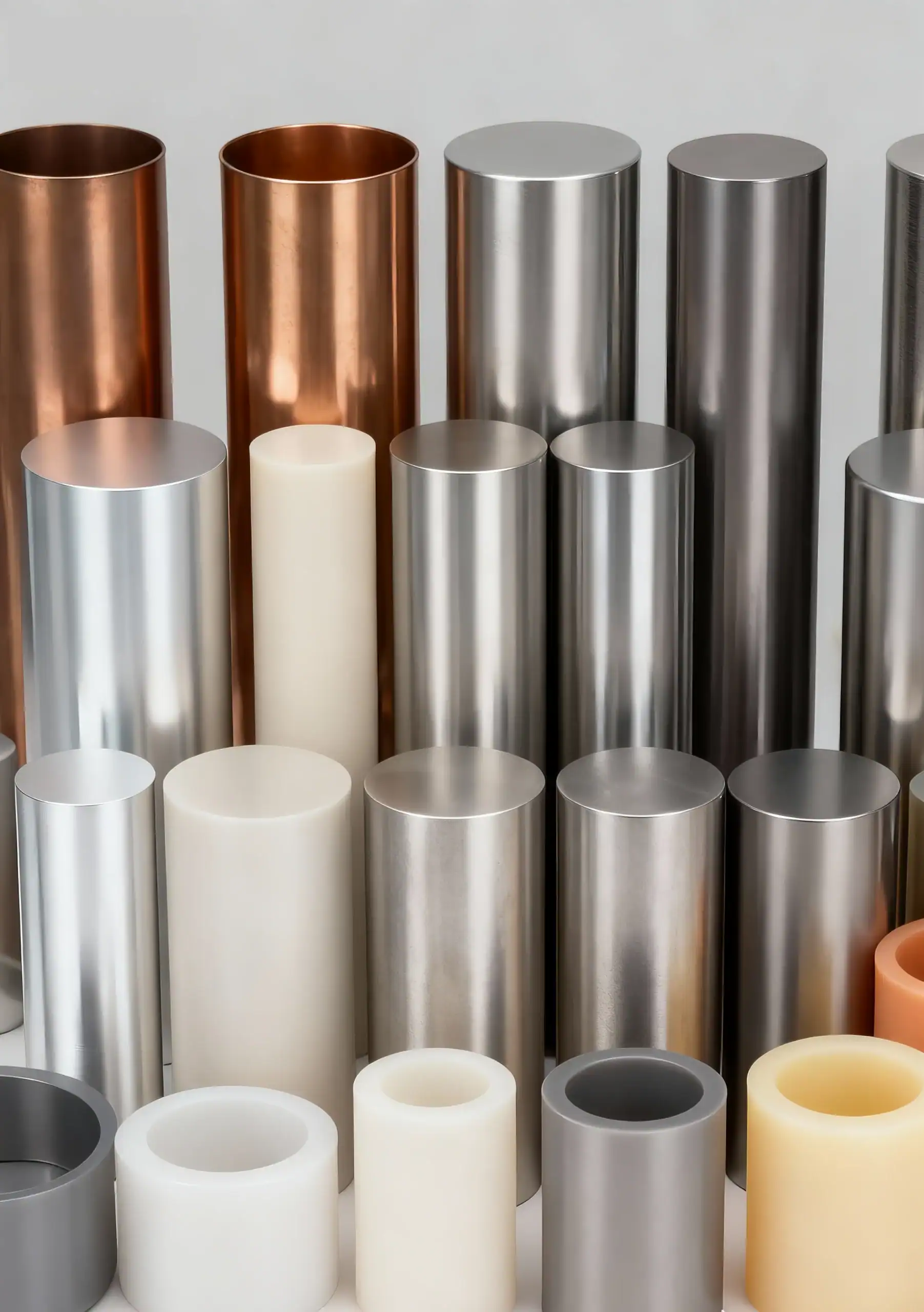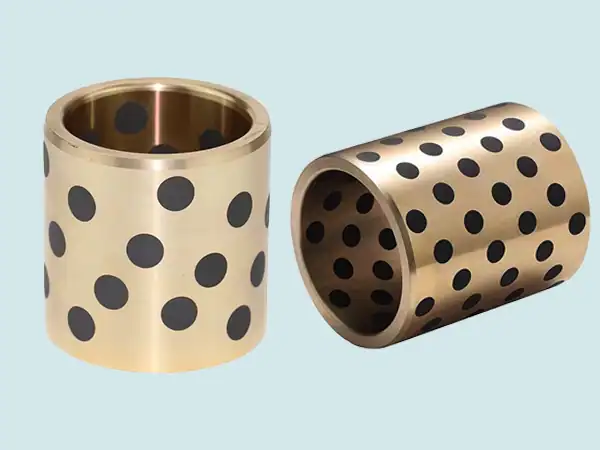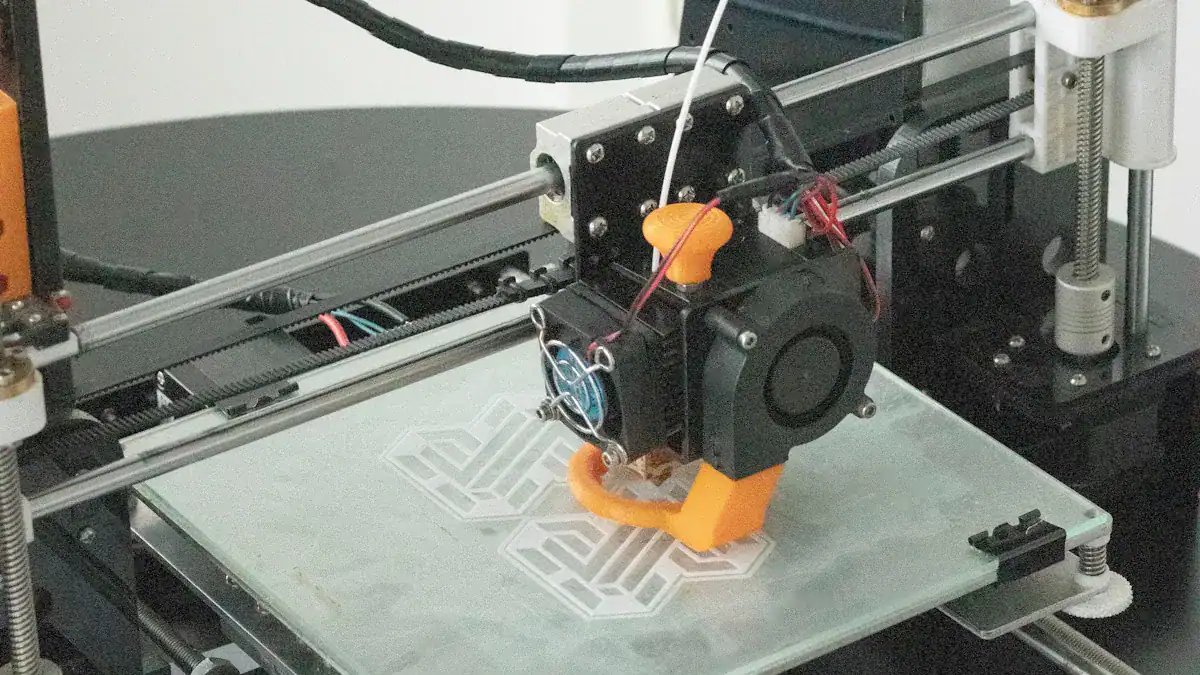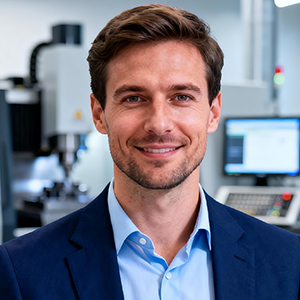The world of 3D printing is vast and exciting, turning digital objects into real objects. Among the many technologies that make this possible, SLA 3D printing stands out for its incredible detail and smooth surface finish. But what exactly is it? How does it create such precise parts? And is it right for you? Let’s take a deeper look!
What is SLA 3D Printing? The Basics of Stereolithography
SLA 3D printing, also known as stereolithography, is one of the oldest and most respected additive manufacturing technologies (another name for 3D printing). The technology was invented in the early 1980s by Chuck Hull (who later co-founded 3D Systems), pioneering the 3D printing industry.
At the heart of SLA 3D printing is a special liquid, light-sensitive material called a photopolymer resin. An SLA printer, more commonly known as a resin 3D printer or photopolymer 3D printer, is a machine that uses an ultraviolet (UV) light source (usually a laser or digital projector) to selectively cure (harden) this liquid resin layer by layer to build a physical object. This process is called photopolymerization.
You can imagine drawing a picture on a piece of paper, then adding another piece of paper on top to draw the next part of the image, and so on, until you have a 3D stack. In SLA, the “drawing” is done with light, and the “paper” is an ultra-thin layer of liquid resin.
How Does an SLA 3D Printer Work? The Step-by-Step Process
Understanding how the technology works can help you fully appreciate its capabilities:
- Digital Design: You start by creating a 3D model using CAD (computer-aided design) software. Specialized software then slices the digital blueprint into hundreds or thousands of very thin horizontal layers.
- Preparation: An SLA resin printer has a container or tank of liquid photopolymer resin. The build platform sits just above or sometimes just below the resin surface.
- Layer-by-layer Curing:
- For the first layer, a UV light source (laser or projector) traces the exact shape of that layer onto the build platform or the bottom of the resin container (depending on how the printer is oriented—top-down or bottom-up).
- The UV light cures the resin to form the first layer of the object, which adheres to the build platform.
- Building Up:
- The build platform then moves a short distance (the thickness of a layer, usually only 25 to 100 microns—that’s 0.025 to 0.1 mm!).
- A new layer of liquid resin flows over the previously cured layer.
- The UV light source tracks and cures the next layer, bonding it to the next.
- Repeat: This process is repeated again and again until the complete 3D object is formed.
- Post-Processing: After printing is complete, the cured resin object is removed from the printer. Then it is necessary to:
- Washing: Remove the excess liquid resin. This is usually done with isopropyl alcohol (IPA) or a specialized cleaning solution.
- Post-curing: The part is then further exposed to UV light (and sometimes heat) in a curing station to fully harden and achieve optimal material properties. This step is important for strength and stability.
- Support Removal (if needed): Complex designs often require support structures to prevent overhangs from collapsing during printing. These support structures need to be carefully removed.
Advantages of SLA 3D Printing: Why Choose It?
SLA 3D printing services has many advantages that make it a popular choice for a wide range of applications:
- Excellent Detail and Smooth Surfaces: These are the hallmarks of SLA. The technology uses light to cure resin at very fine points, so it can print fine, smooth parts that are often comparable to injection molding quality. Lines between layers are often difficult to see. For example, many SLA 3D printers can have layer heights as small as 25 microns (0.025 mm) and resolutions as low as 0.05 mm.
- High Precision and Tight Tolerances: The accuracy of the light source and the controlled curing process can print parts with precise dimensions. This is important for functional prototypes, dental models, and engineering parts that require precise fits. A study comparing 3D printing technologies for dental applications showed that industrial-grade SLA systems can achieve tolerances as tight as ±0.05 mm for small parts.
(Data Source: Kim J H, Pinhata-Baptista O H, Ayres A P, et al. Applied Sciences, 2022, 12(17): 8425.) - Material Diversity: While all SLA 3D printing materials use photopolymers, there are many different types. These include standard resins, tough and durable resins for mechanical parts, flexible resins, castable resins for jewelry and dental applications (they burn out completely during the metal casting process), high-temperature resins, and even biocompatible resins for medical devices.
- Complex Geometries: SLA can create complex internal features and precision designs that are difficult or even impossible to achieve with traditional manufacturing methods.
Beyond SLA: An Overview of Other Mainstream 3D Printing
While SLA has unique advantages, it is only one of a large field in the 3D printing world. Understanding other mainstream technologies can help you choose the best one for your project:
FDM (Fused Deposition Modeling) 3D Printing:
- How it works: This is probably the most widely known type of 3D printing. FDM 3D printers work by melting thermoplastic filament (a roll of plastic filament, such as PLA, ABS, or PETG) and then extruding it through a heated nozzle to build the object layer by layer from the bottom up.
- Key Features: FDM printers are generally affordable and user-friendly, especially for beginners. They offer filaments in a variety of colors.
- Best for: Hobbyists, rapid prototyping of simple shapes, educational use, creating functional parts without much attention to detail.
- Notes: Parts from FDM printers often have distinct layer lines and lower resolution than SLA. Strength can vary, especially between layers (Z axis).
SLS (Selective Laser Sintering) 3D Printing:
- How it Works: SLS 3D printing uses a high-powered laser to selectively melt (or sinter) small particles of polymer powder, typically nylon or polyamide. A roller spreads a thin layer of powder, the laser sinters the cross-section of the object in that layer, and then the build platform is lowered to print the next layer.
- Key Features: SLS produces strong, durable parts with good mechanical properties, and is often used for functional prototypes and end-use parts. The main advantage is that it does not require support structures, as the unsintered powder in the build chamber supports the object during printing.
- Best for: Complex geometries, functional parts, snap-fit connections, living hinges, and small to medium-volume production.
- Notes: SLS printers are more expensive than FDM and most desktop SLA printers. Parts will have some graininess on the surface unless post-processed, and will be primarily nylon.
SLM (Selective Laser Melting) 3D Printing/DMLS (Direct Metal Laser Sintering):
- How it Works: SLM 3D printing is an additive manufacturing process specifically for metals. Similar to SLS, it uses a high-powered laser to completely melt and fuse metal powder layer by layer to create a solid metal part. DMLS is a similar process that sinters rather than completely melts the powder, but the two terms are often used interchangeably with metal powder bed fusion processes.
- Key Features: SLM can produce dense, strong metal parts with complex geometries that are difficult or impossible to achieve with traditional subtractive manufacturing. Materials include stainless steel, aluminum, titanium, cobalt-chrome alloys, and tool steels.
- Best for: Aerospace components, medical implants, custom molds, complex metal prototypes, and low-volume production of high-value metal parts.
- Notes: SLM systems are expensive, require significant expertise to operate, and involve extensive post-processing (e.g., stress relief, support removal, surface treatment). The process also requires a tightly controlled build environment (usually an inert atmosphere).
MJF (Multi Jet Fusion) 3D Printing:
- How it Works: Developed by HP, MJF 3D printing is a powder bed fusion technology used primarily for polymers (e.g., PA11, PA12 nylon). It works by depositing a flux on the powder layer where the particles need to be fused, and depositing a refiner in areas where melting is needed to be prevented or improved. An infrared (IR) energy source then scans the powder bed, melting and fusing the flux areas.
- Key Features: MJF is known for its high print speeds, especially when mass-producing parts, and its ability to produce durable, functional, surface-quality, and dimensional-accurate powder-based process parts. Parts tend to have more uniform isotropic (uniform strength in all directions) properties than FDM.
- Best for: Short- to medium-term production of functional nylon parts, complex geometries, and parts that require good mechanical properties and consistent quality.
- Notes: The initial investment in an MJF system is high. Material selection, while growing, is still limited compared to FDM.
3D Printing Materials: Explore SLA 3D Printing Resins
A wide range of SLA 3D printing materials greatly enhances the versatility of SLA 3D printers:
- Standard Resins: For general prototyping and visual modeling.
- Tough/Durable Resins: Used for functional parts that need to resist stress (e.g., Formlabs Tough 2000 resin: tensile strength ~52 MPa, elongation ~40%).
- Flexible Resins: Simulates rubber-like materials.
- Castable Resin: Used for investment casting (jewelry, dental), burns out cleanly.
- High Temperature Resins: Withstand higher temperatures (some >200°C HDT).
- Dental and Biocompatible Resins: Used in certified dental/medical applications (ISO 10993 compliant).
Applications: Where Does SLA 3D Printing Shine?
SLA 3D printing is ideally suited for the following applications:
- Prototyping: Highly detailed visual and functional prototypes.
- Dentistry: Customized surgical guides, models (Global Dental 3D Printing Market: $3.5 billion by 2022, 20.2% CAGR 2023-2030 – Source: Grand View Research).
- Jewelry: Master molds for investment casting.
- Medical Models: Patient-specific anatomical models.
- Engineering: Precision functional components, jigs and fixtures.
- Artwork, statues and miniatures: Capturing minute details.
- Hearing aids: customized housings
Comparing 3D Printing Technologies: SLA vs. Others
When choosing the right 3D printing method for your project, it’s important to understand the differences between the different technologies. Here are some comparisons:
| Feature | SLA 3D Printing | FDM 3D Printing | SLS 3D Printing | SLM/DMLS 3D Printing | MJF 3D Printing |
|---|---|---|---|---|---|
| Technology | UV Curing Liquid Resin | Extruding Molten Plastic | Fusing Polymer Powder with Laser | Fusing Metal Powder with Laser | Fusing Polymer Powder with Agents & Heat |
| Resolution | Very High | Low to Medium | Medium to High | High (for metal) | Medium to High |
| Surface Finish | Very Smooth | Visible Layers | Slightly Grainy | Grainy (requires post-processing) | Moderately Smooth |
| Materials | Photopolymer Resins | Thermoplastics (PLA, ABS, etc.) | Polymers (Nylon, TPU) | Metals (Steel, Ti, Al, etc.) | Polymers (Nylon, TPU) |
| Part Strength | Varies (Standard brittle, Engineering stronger) | Good (material/settings dependent) | Very Strong (Nylon) | Very Strong (Metal) | Very Strong (Nylon) |
| Primary Use | Prototypes, Molds, Dental, Jewelry | Hobbyist, Prototypes, Jigs/Fixtures | Functional Parts, End-Use Parts | End-Use Metal Parts, Tooling | Functional Parts, Short-Run Production |
| Cost (Printer) | Medium to High | Low to Medium | High | Very High | Very High |
| Cost (Material) | Medium to High | Low | Medium to High | Very High | Medium to High |
| Supports | Usually Required | Often Required | Not Required (self-supporting powder) | Required (metal, complex) | Not Required (self-supporting powder) |
Our SLA 3D Printing Services
At Future Parts, we offer specialized SLA 3D printing services for your prototyping and production needs. Utilizing high-resolution stereolithography (SLA) technology, we deliver parts with superior surface finish, fineness, and dimensional accuracy.
Why choose our SLA 3D printing technology?
- High Precision & Smooth Finish: Ideal for visual prototypes, engineering models, and end parts requiring tight tolerances.
- Wide Material Selection: from standard resins to tough, flexible engineering-grade materials.
- Fast Turnaround: Rapid production to meet tight deadlines.
- Scalable Production: from individual prototypes to small-lot production.
We support the automotive, medical, dental, consumer electronics and industrial design industries. Whether you need rapid prototypes or highly detailed functional parts, our SLA 3D printing services ensure quality and consistency.
Conclusion
SLA 3D printing is a fundamental technology known for its detail, smooth surfaces and accuracy. Applications range from stereolithography 3D printers for jewelry to industrial grade SLA 3D printers for dental molds. While care needs to be taken in material handling and post-processing, the results are often unrivaled for high fidelity applications.

